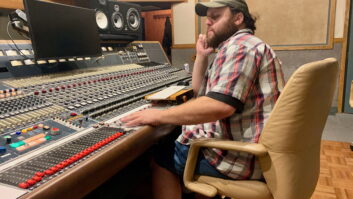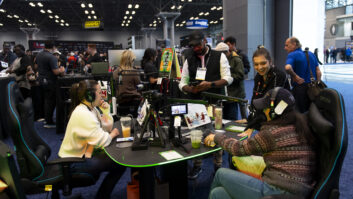If you’ve spent time on Facebook recently, you’ve seen “live” videos of users doing just about everything.
In my radio sphere, I have several sportscasters who are propping up their phones in front of themselves and broadcasting pregame shows and coaches interviews, to name just a few of the listener experiences to which they want to add content.

Some of the more savvy sportscasters have asked me, “How do I get my remote mix into my [Android/iPhone] smartphone? I want the listeners to hear the broadcast quality-audio on the Facebook live session.”
In another scenario, the morning show wanted to feed a mobile device from a headphone output source and record the tracks for FTP upload. In these situations, it’s just as easy to find a handy headphone output.
An engineer’s first reaction is often to acquire a 3.5 mm TRRS (tip-ring-ring-sleeve) plug and connect it to a 1/4-inch TRS or XLR to accommodate feeding a console output or headphone feed into the mobile device.
Sometimes this can work, but generally, the effort is wrought with impedance mismatches and wrong pinout configurations.
THE MISMATCH
Most mobile devices use the CTIA (formerly known as the Cellular Telephone Industries Association) standard on the TRRS (headphone/microphone) jack.
The CTIA standard is different from the Open Mobile Terminal Platform standard used by some older devices and tablets.

In-line volume controls on ear bud cables employ different pinout configurations for play/pause and volume signaling. And in my experience, an impedance mismatch can confuse the device and create all kinds of signaling problems.
So after taking that into consideration, what is the best way to feed audio into a mobile device?
I stumbled across the iRig 2 from IK Multimedia. It uses the CTIA standard on a TRRS pigtail, which means it is compatible with virtually every mobile device.
The form factor of the iRig 2 favors musicians — its 1/4-inch input is even marked with a guitar symbol.
The iRig 2 has an input level control on the side and it takes care of impedance mismatches. Plus, it’s dirt cheap — it costs about $40.
The only caveat is this: The input jack on the iRig 2 is a TS, or “tip sleeve” jack.
Maybe I’m picky, but if our staff decides to use a headphone output to feed the input of the iRig 2, and they use a typical mono or stereo 1/4-inch cable, they’re missing half the stereo signal.
I prefer to have left and right both fed into the mobile device, otherwise, TS-to-TS and TRS-to-TRS only picks up the left half of the program material.
So I built an iRig 2-specific cable.
THE (SIMPLE) SOLUTION
The end that plugs into the headphone output uses a TRS 1/4-inch cable. The tip carries left audio, the ring carries right audio and the sleeve is common. The other end uses a TS 1/4-inch plug, wherein the shield of the cable connects the common (sleeve) on both ends and the TS wires are paralled together into the tip of the mono end.
(Please refer to the diagram on above because what you just read makes no sense to me, either!)
It’s important to label the cable accordingly. The TRS end must be plugged into the source. Otherwise, the purpose is defeated, and you’ll only be feeding left side material into the iRig 2.
The cable assembly is fairly elementary. It’s no more than a stereo-mono sum. But it’s really important!
We’ve all attempted to do impedance matching using project boxes and every assortment of jack configurations.
But the iRig 2 will work in most situations when trying to feed line level audio into a phone, and an extra five minutes of soldering will ensure that you get all of the program material.
Chris Wygal is the operations manager for The Journey Radio Network in Virginia.







